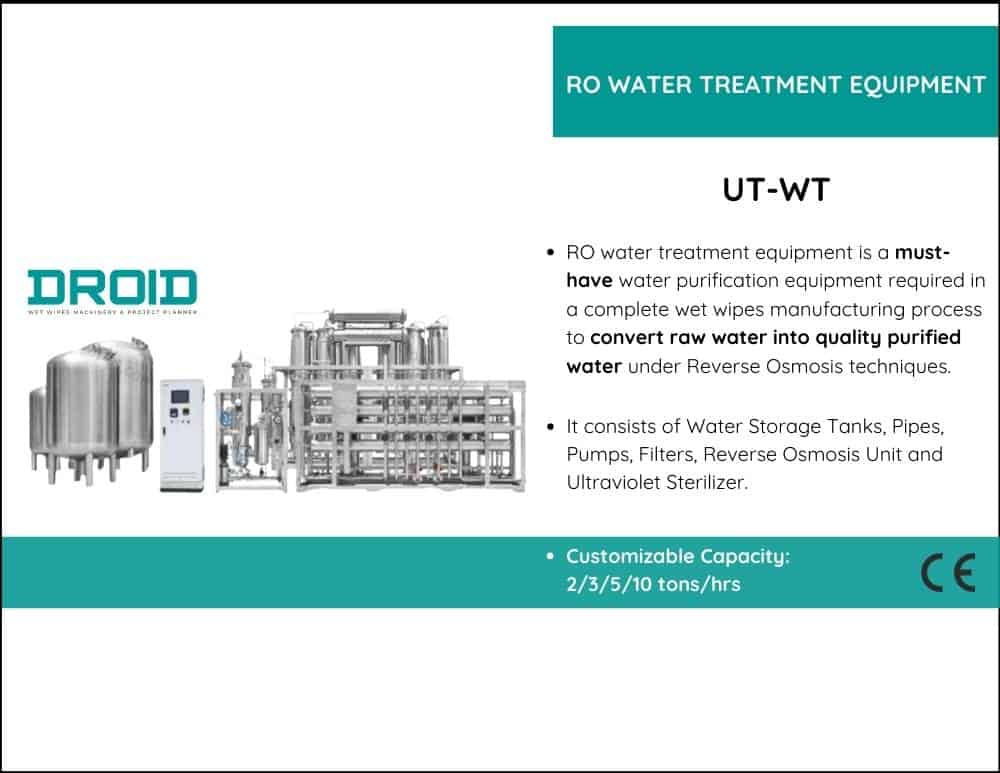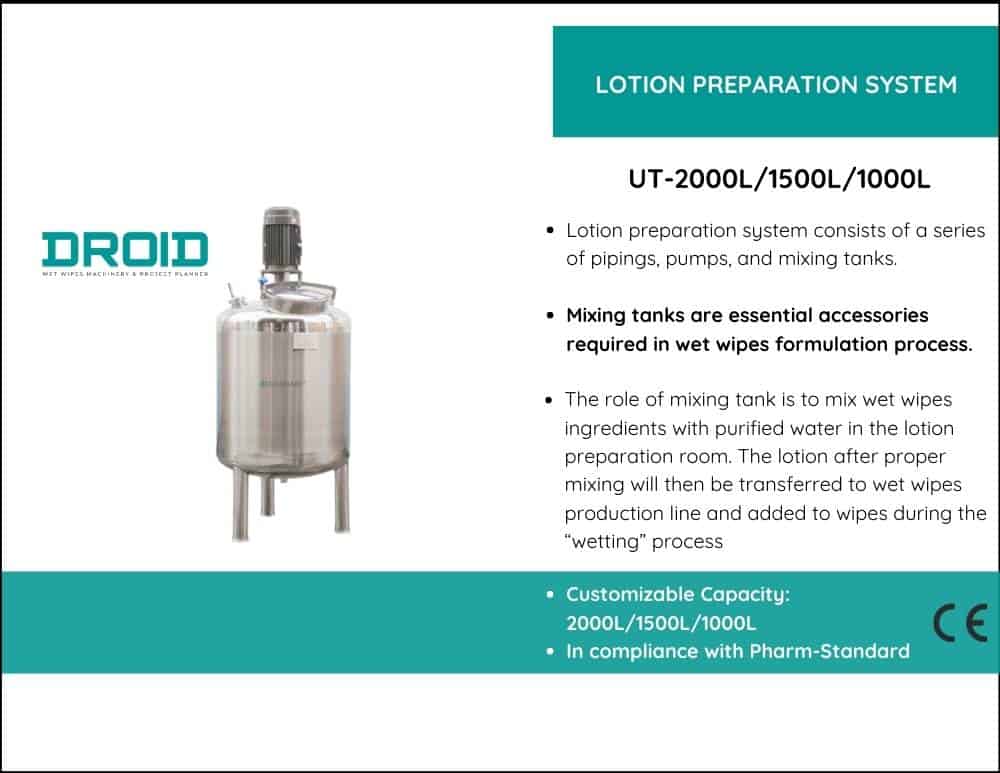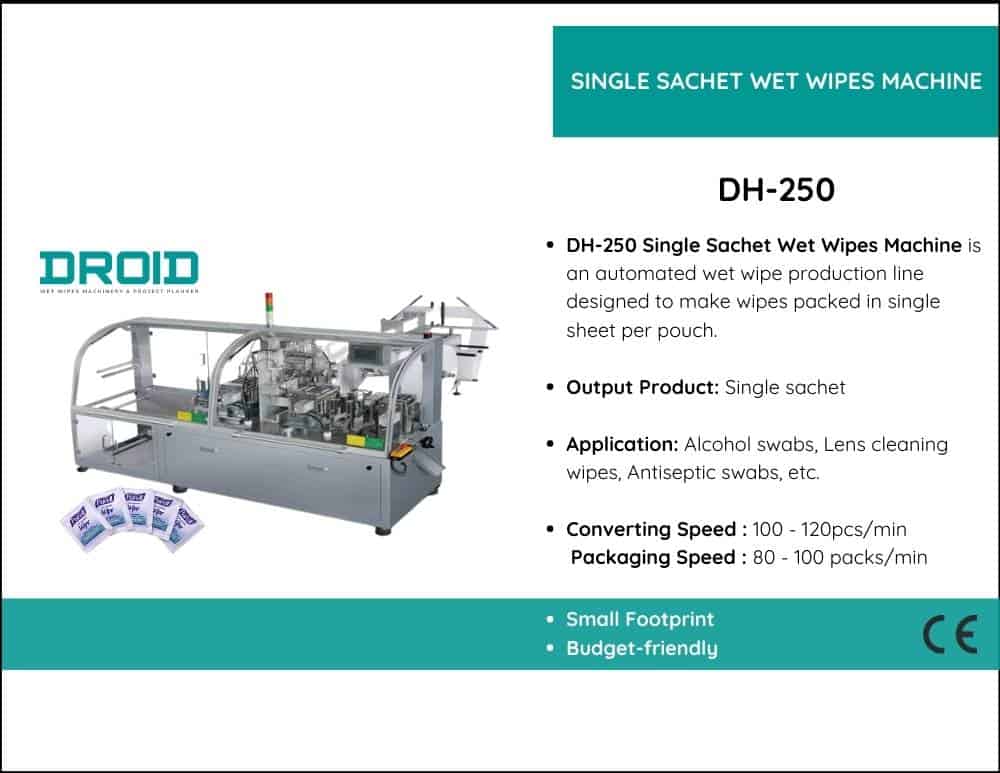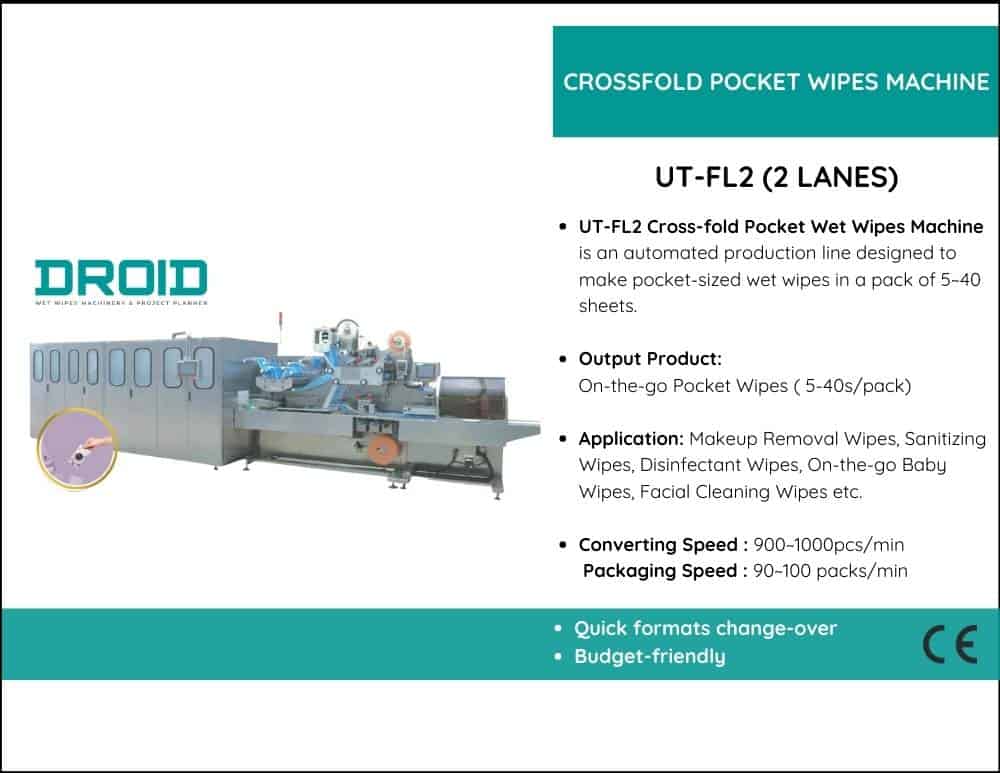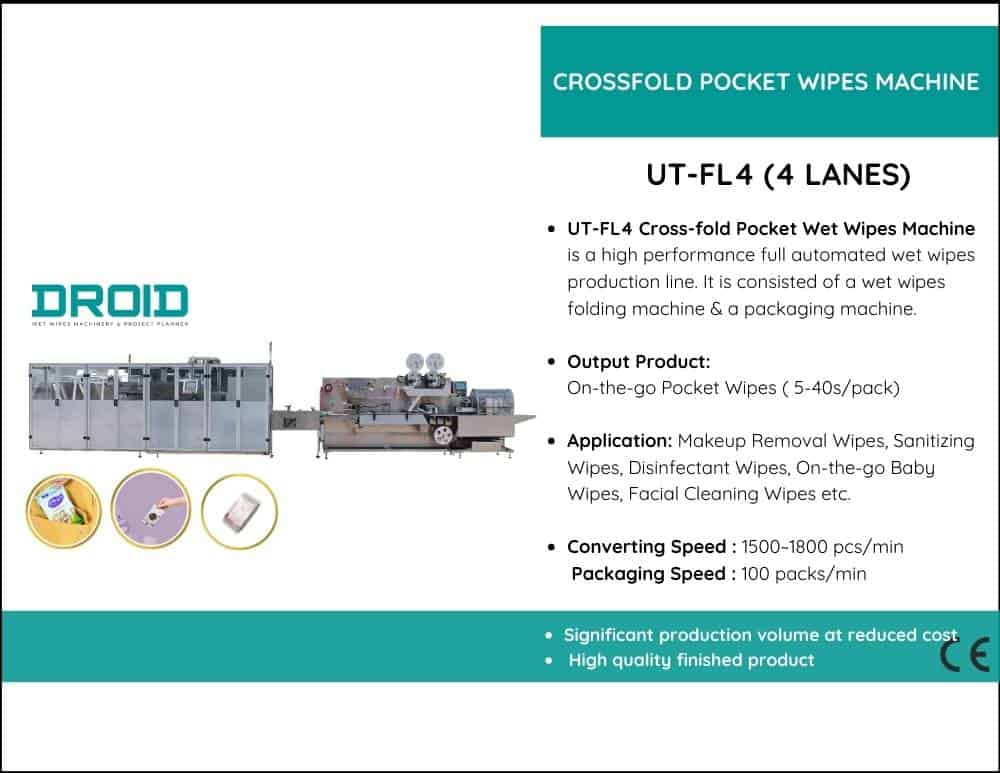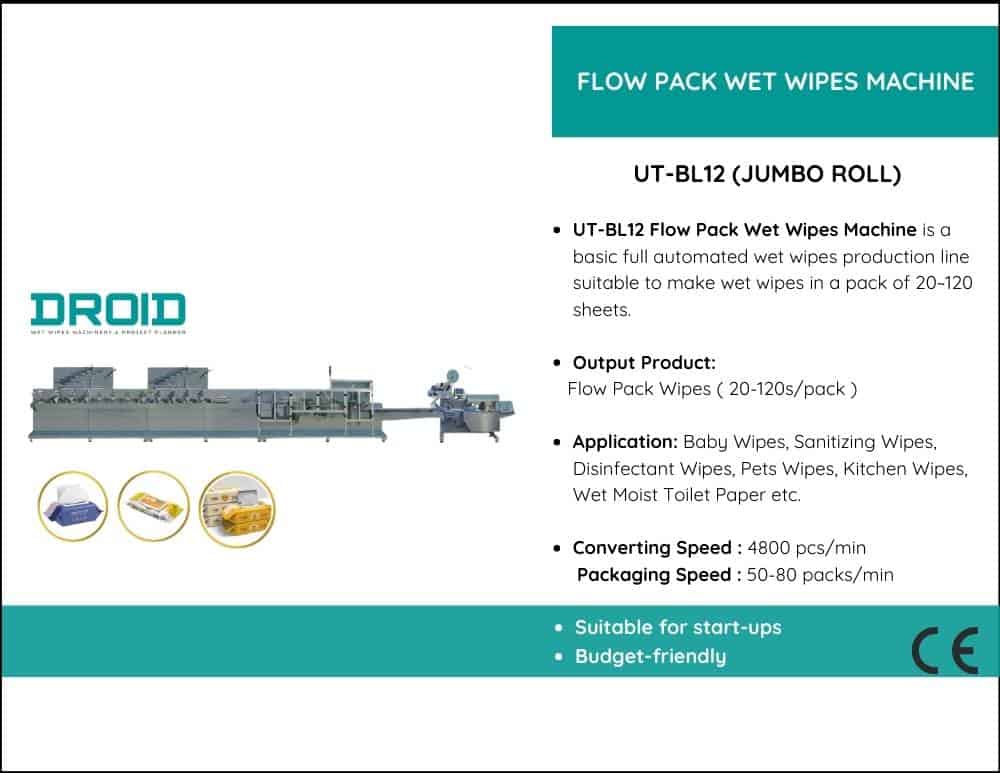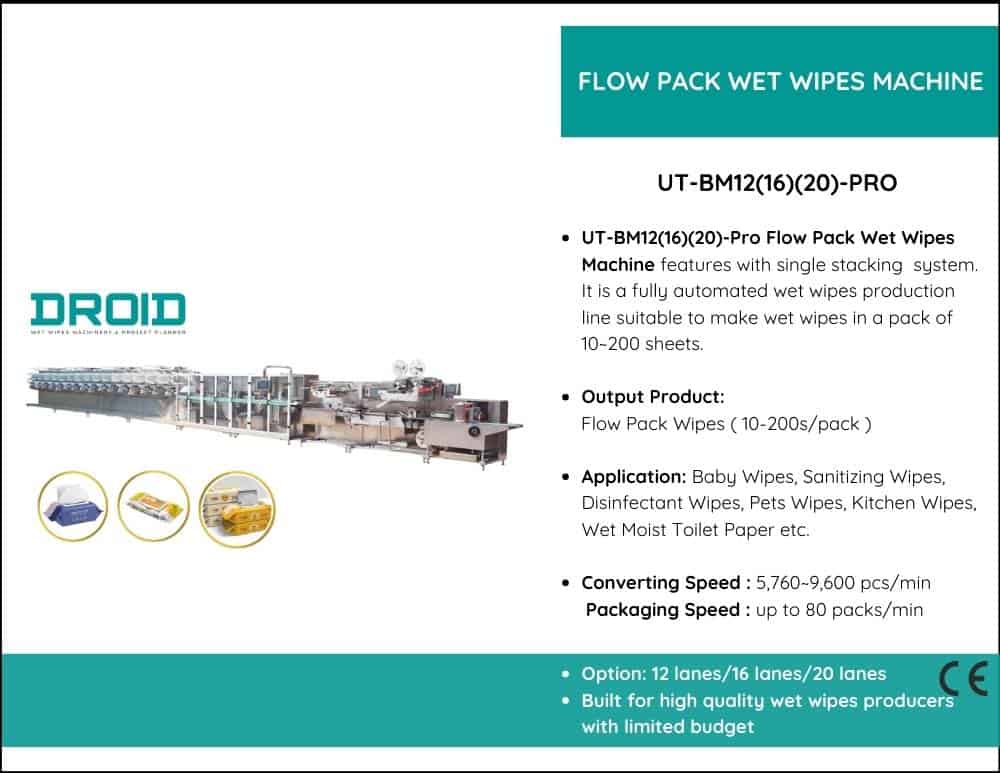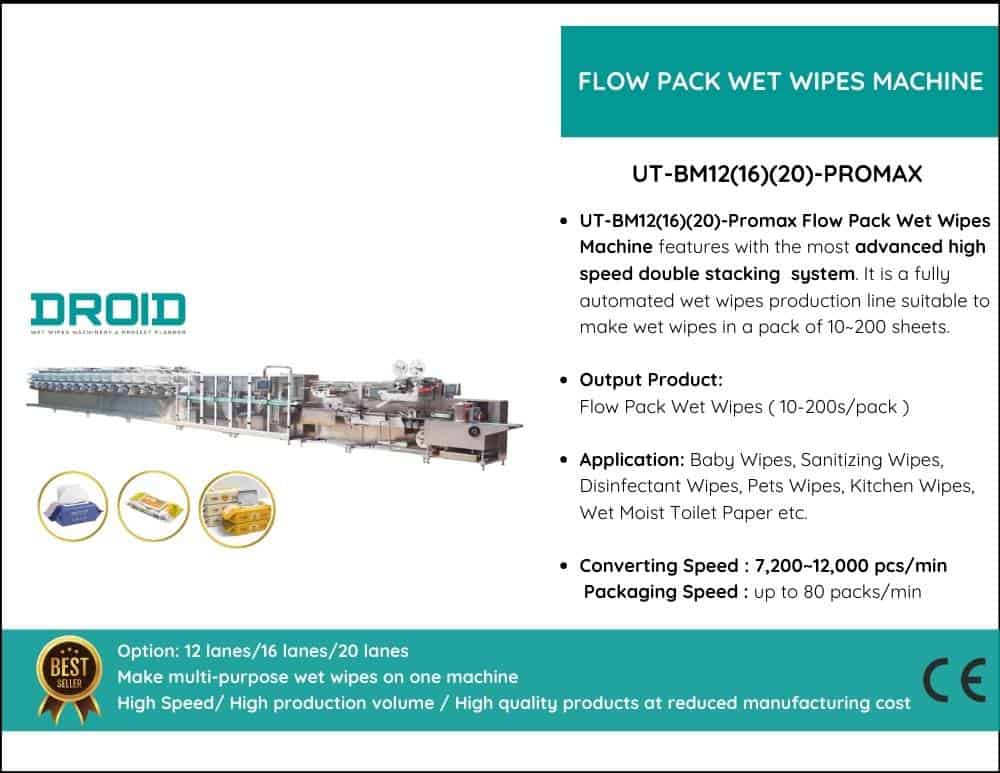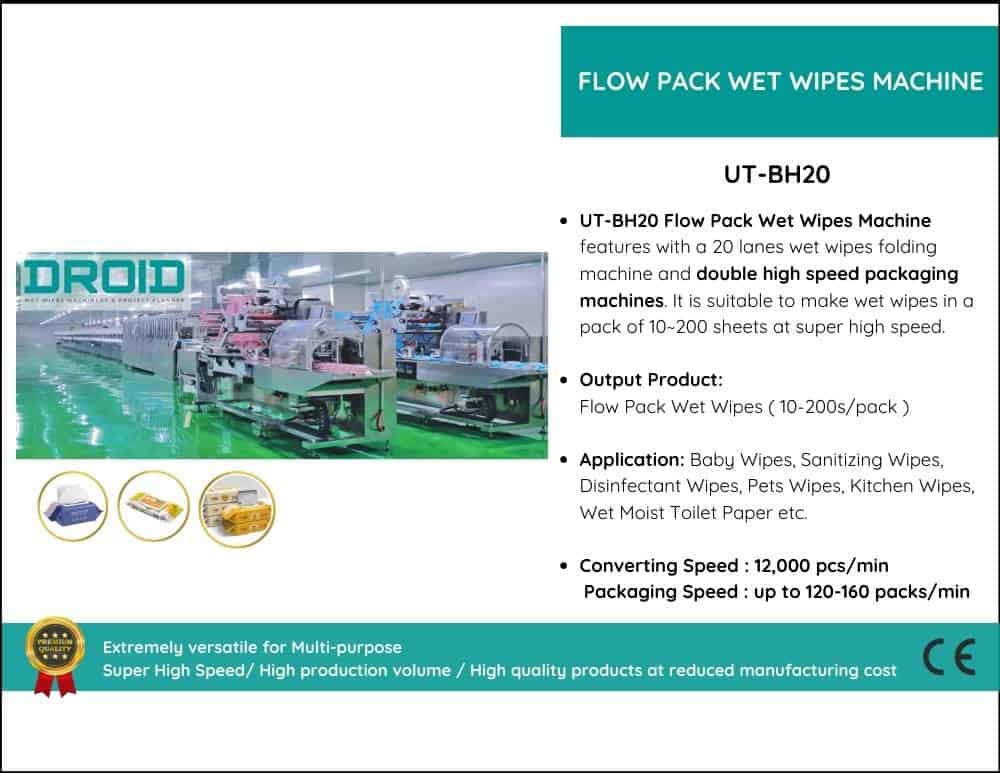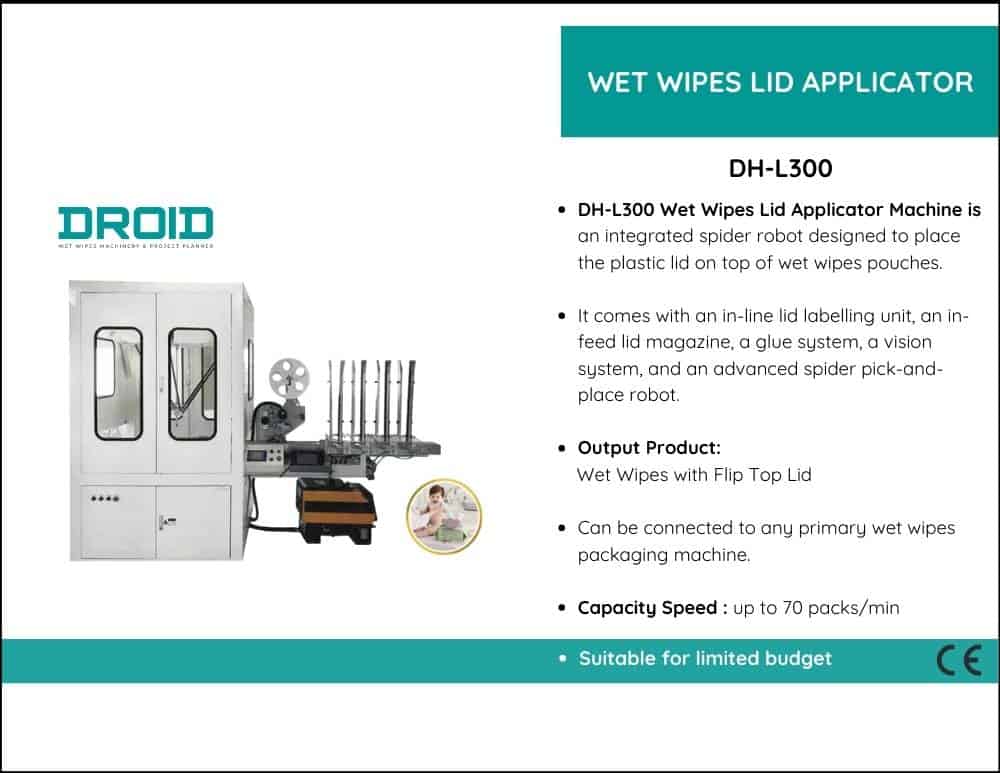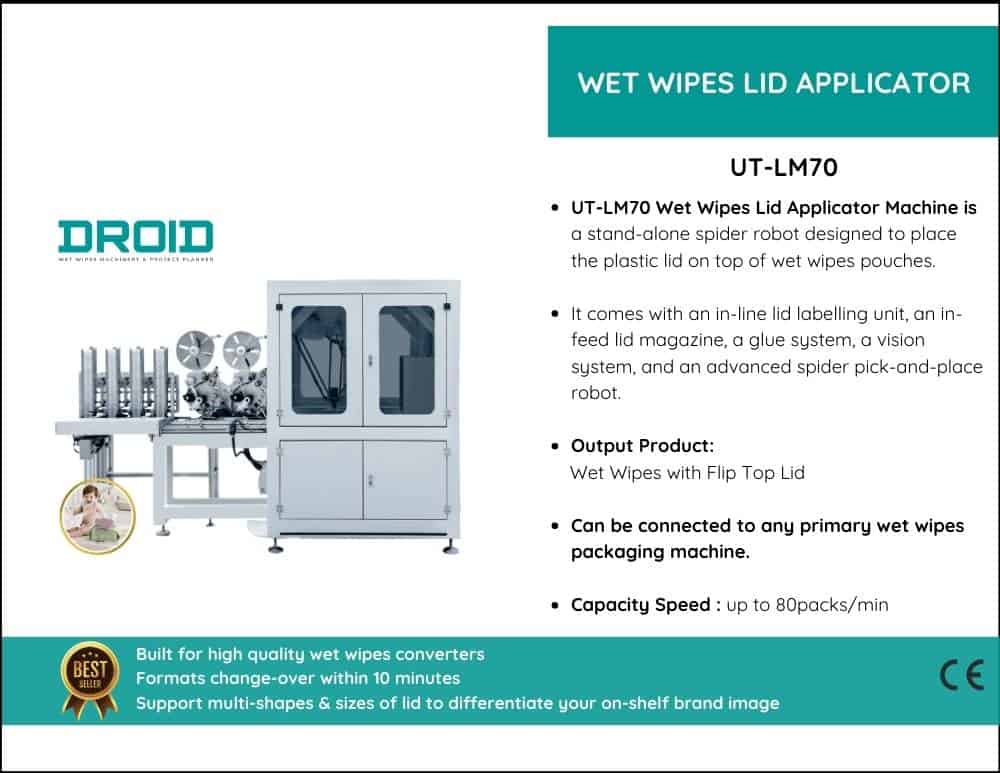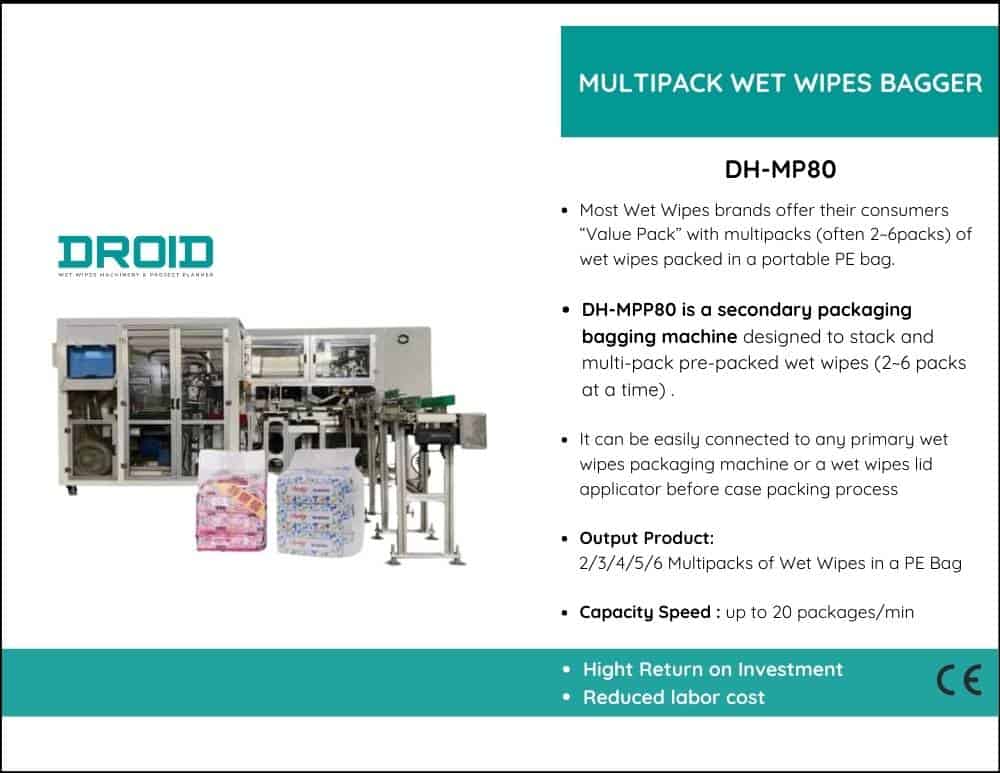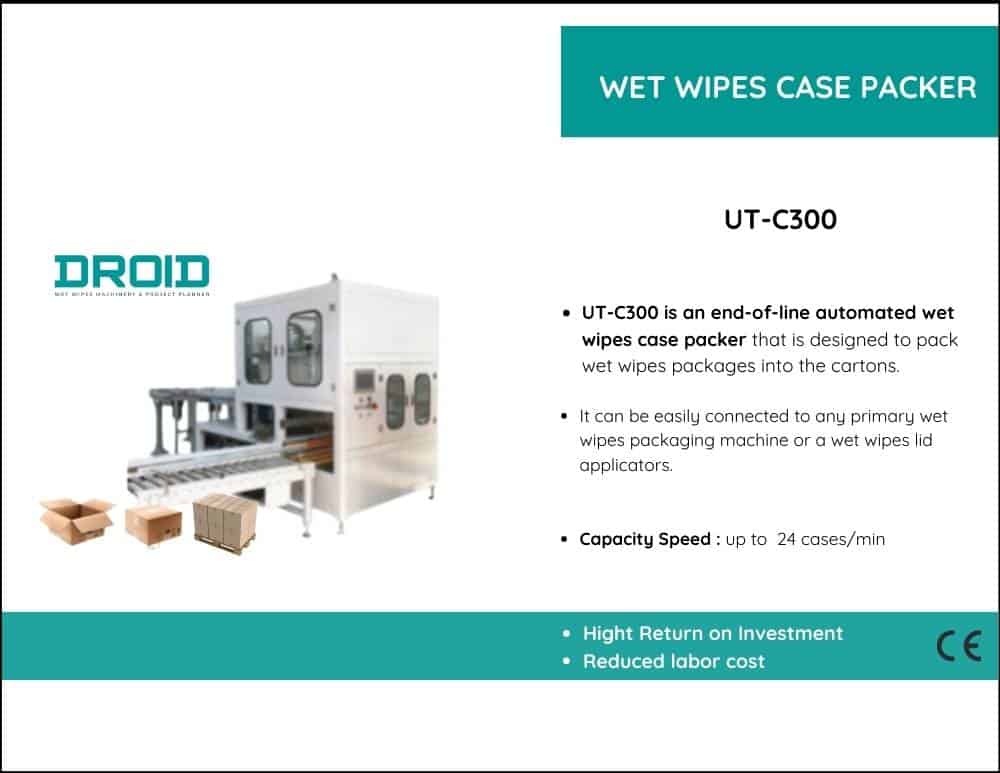Wet wipes have become a daily necessity in personal hygiene, particularly with the spread of COVID-19 and the desire for greater protection against bacteria and disease. This rising popularity has caused an unprecedented increase in demand for personal care wipes, antibacterial wipes, and even moist toilet paper.
But what ingredients are involved, how are baby wipes manufactured, and what procedures are followed during production? This informative guide from DROID Group covers the full wet wipe manufacturing process from beginning to end. Discover everything you need to understand about wet wipes production by reading on!
How are wet wipes made?
Wet wipes are usually manufactured from a mixture of synthetic fibers and a solution including water and additional substances for moisturizing, cleansing, and disinfection. The fibers are first woven into a sheet, which is then divided into smaller pieces and immersed in the solution. The sheets are then kept in airtight containers to maintain their moisture until they are utilized.
What is the complete wet wipes manufacturing process?
A wet wipes production line typically consists of several key pieces of the process, including a RO water purification process, a lotion preparation process, a wet wipes converting and packaging process, a wet wipes lid application process, a wet wipes secondary packaging process, and an end-of-line packaging process.
Step 1: RO Water Purification Process
Generally, wet wipes contain up to 99% water. Wet wipes should be made using water that is either highly purified or reverse osmosis standard. Reverse osmosis (RO) is a water purification process that involves forcing water through a semi-permeable membrane to eliminate impurities and contaminants. In the context of wet wipes production, RO water purification may be used to purify the water that is used in the liquid solution that is used to saturate the wipes.
The RO process usually consists of the following steps:
- Pre-treatment: Chemicals are used to clean the water of any big pollutants or particles that can affect the RO membrane.
- Filtration: Water is filtered through several filters to get rid of any pollutants or leftover particles.
- RO: Water is forced across a membrane that is semi-permeable and enables water molecules to flow over but stops big impurities and contaminants.
- Post-treatment: Chemicals are used to regulate the pH and get rid of any contaminants still present in the purified water.
By using RO water purification, wet wipes producers can ensure that the water used in their liquid solution is free of impurities and contaminants, which can improve the quality and effectiveness of their wipes. Thus, the first stage in producing a good wipe is to set up purified water.
Step 2: Lotion Preparation Process
Wet wipes are a kind of pre-moistened cloth that may be applied to the skin to clean, refresh, or moisturize it. The following stages are usually included in the process of producing wet wipes with lotion:
- In a large mixing tank, combine the ingredients for the lotion or cleaning solution. Water, glycerin, or other moisturizing ingredients are often included in this, along with any additional required ingredients like fragrances or preservatives.
- Dip the wipes into the lotion or cleansing solution, making sure they are completely saturated.
- Squeeze out any excess liquid from the wipes and spread them out on a flat surface to dry.
- The wipes may be divided into individual wipes and packed for usage after they have dried.
When making wet wipes lotion, it’s crucial to choose the best ingredients and adhere to proper production techniques to guarantee the finished product is secure and beneficial for skin application.
Step 3: Wet Wipes Converting & Packaging Process
Non-woven Roll Unwinding → Tissue Folding → Tissue Cutting → Wetting → Tissue Stacking → Die Cutting → Re-sealable Sticker Labeling → Bag Forming→ Bag sealing → Output Product (Without Plastic Lid)
The following steps are commonly included in the wet wipes converting and packaging process:
- On a rolling conveyor belt, the wet wipes are loaded and fed through a machine that divides them into individual wipes and shapes them as required (e.g., rectangular, square, or round).
- Once inside a packaging machine, the folded wipes are sealed within a package or container using heat sealing or another technique.
- After quality-checking, the wipes are packaged and placed into bigger boxes or cases for delivery.
This method is used to produce all kinds of wet wipes for a wide range of purposes in the market. For example, Facial Wipes, Flushable Wipes, Biodegradable Wipes, Pet Wipes, Alcohol Wipes, Kitchen Wipes, etc. The machine speed, convertible formats such as tissue counts in the bag, tissue dimensions, and bag dimensions are the main differences between each model of wet wipes manufacturing line applied in this process.
The converting and packaging of wet wipes is typically carried out using specific machinery that is intended to manage the delicate nature of the wipes and guarantee that they are properly packaged for usage. Depending on the wipes’ intended purpose and the manufacturers’ choices, a pouch, container, or another packaging style may be chosen.
Step 4: Wet Wipes Lid Application Process
labeling on lid →gluing →lid pasting
The wet wipes lid application process is a process in wet wipes production that involves attaching a lid or cover to the wipes container or pouch. This typically involves the following steps:
- Wet wipes in the package are placed into a machine that attaches the lid or cover while being positioned on a moving conveyor belt.
- Depending on the type of packaging being applied, either heat sealing or another technique is employed to attach the lid or cover to the container or pouch.
- After being quality-checked, the wipes with lids are then placed in bigger boxes or cases and ready for shipment.
The operation of applying the lids to wet wipes is normally carried out with the aid of specialized machinery that is intended to manage the delicate nature of the wipes and guarantee the lids are attached correctly. The intended application of the wipes and the preferences of the manufacturer will determine the kind of lid to be used (e.g., flip-top, peel-off, etc.).
Wet wipes are not often glued or attached to a lid via adhesive. The conventional packaging for wet wipes consists of a pouch or container with a lid that is attached by heat sealing or another technique, such as ultrasonic welding. This makes it simple to use the wipes and keeps them from drying out. It would be challenging to dispense the wipes if they were attached to a lid with adhesive, and there is a chance that the glue would come in touch with the skin, which might be dangerous. It is more typical to use heat sealing or another technique to attach the lid to the container or pouch.
Step 5: Wet Wipes Secondary Packaging Process (Optional)
Wet wipes are often supplied in individual packages on the market.
But maybe you’ve seen the bargain pack, which has 3 to 6 packets of wipes in a PE bag.
Multi-pack wet wipes bagging machines or hand packaging are employed to achieve it.
This step may be ignored if making and selling value packs is not your intention.
Step 6: End-Of-Line Packaging Process
Case packing→ palletizing
Case packing and palletizing are the end-of-line packaging processes in the production of wet wipes.
Wipes packets are usually packed into each carton during the case packaging process, typically in a less efficient method.
A fully automated end-of-line packaging system eliminates manpower shortages and rising labor costs.
Once the wet wipes are palletized, they are ready for storage or transportation to warehouses, distribution centers, or retail outlets.
A wet wipes production line might include other processes for quality assurance, inspection, and other tasks in addition to these essential processes.
What different types of wet wipe manufacturing lines are there?
There are four different types of wet wipes production lines:
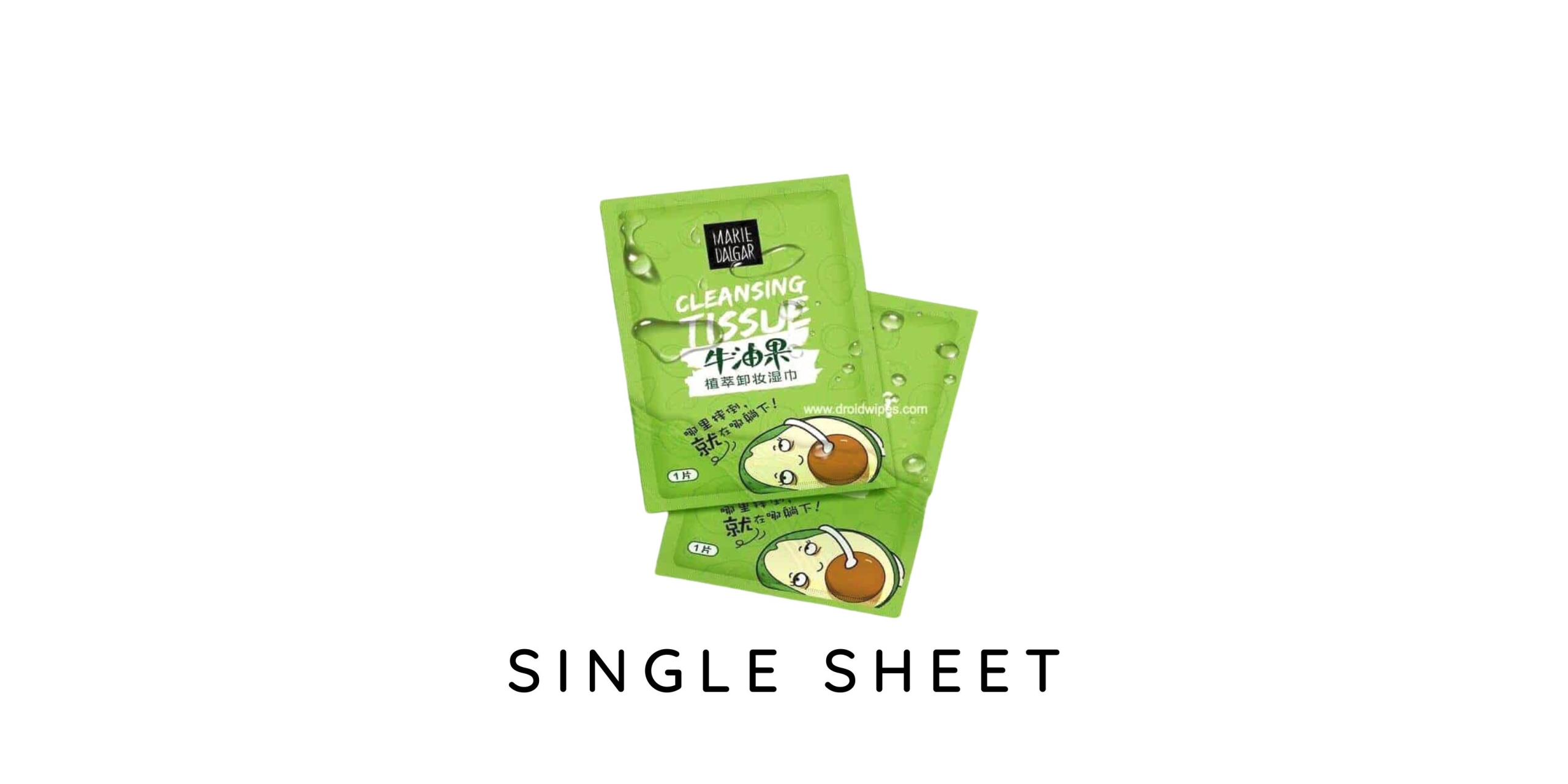
Example: airline wipes, restaurant wipes, alcohol swabs
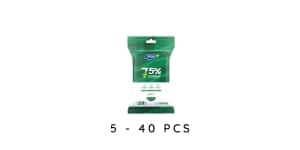
Example: 10 counts of facial wipes, 25 counts of makeup removal wipes
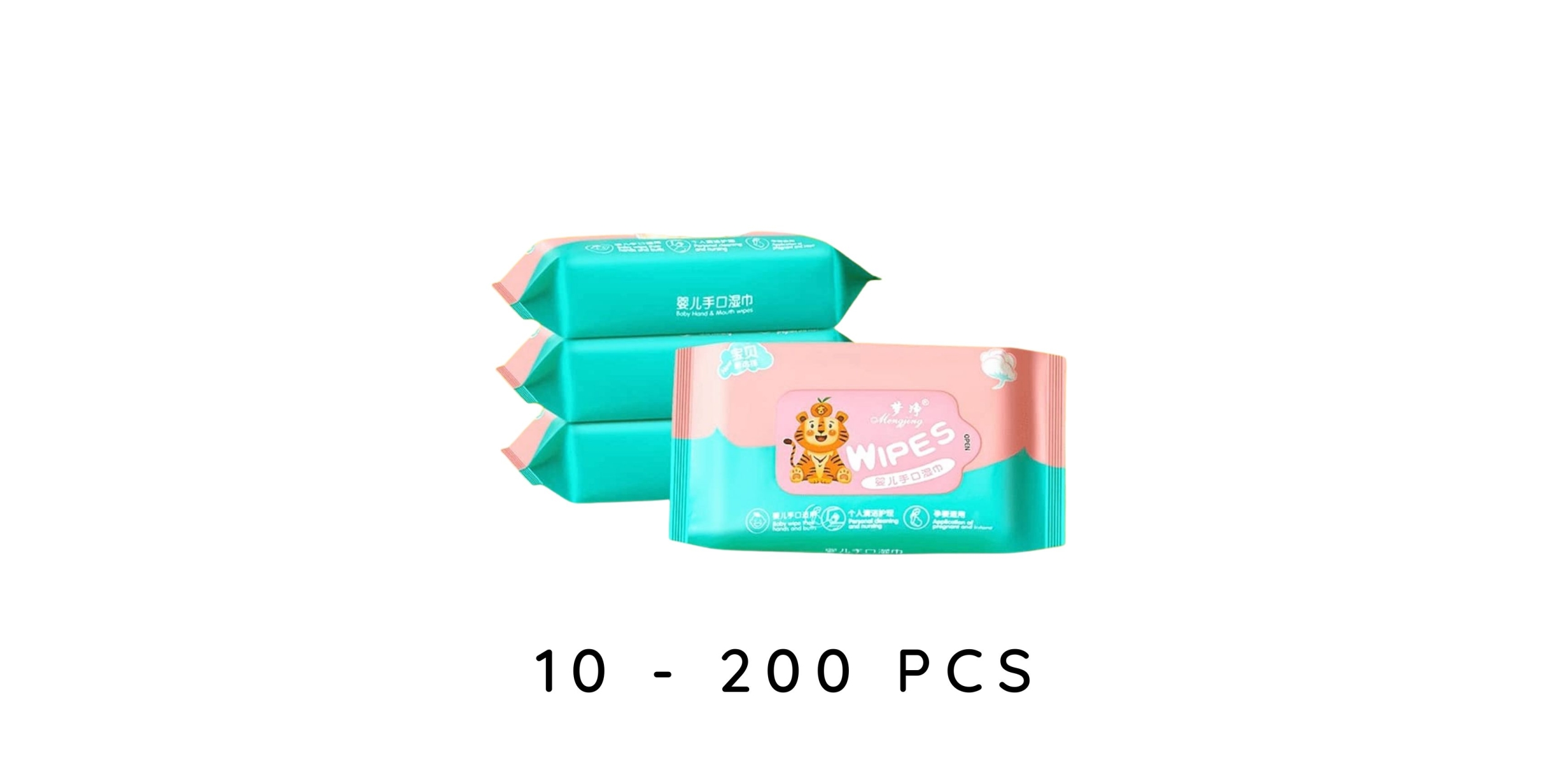
Example: 80 counts of baby wipes, 100 counts of kitchen wipes
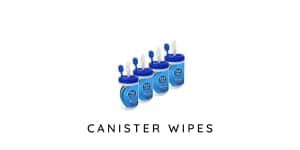
Example: car wipes, household cleaning wipes
At DROID, we provide wet wipes industry professionals with the end-to-end solutions and machinery they need to manage every phase of their manufacturing process.
Our experts are ready to advise you through every step of the wet wipe manufacturing process from beginning to end.
Contact us now!
DROID is committed to providing high-quality products and excellent service to customers. We follow strict quality management standards to ensure that each wet wipes manufacturing machine is fully tested before delivery. We aim to be a leader in the global wet wipes production field through continuous technological innovation and outstanding customer service, growing together with our customers.


